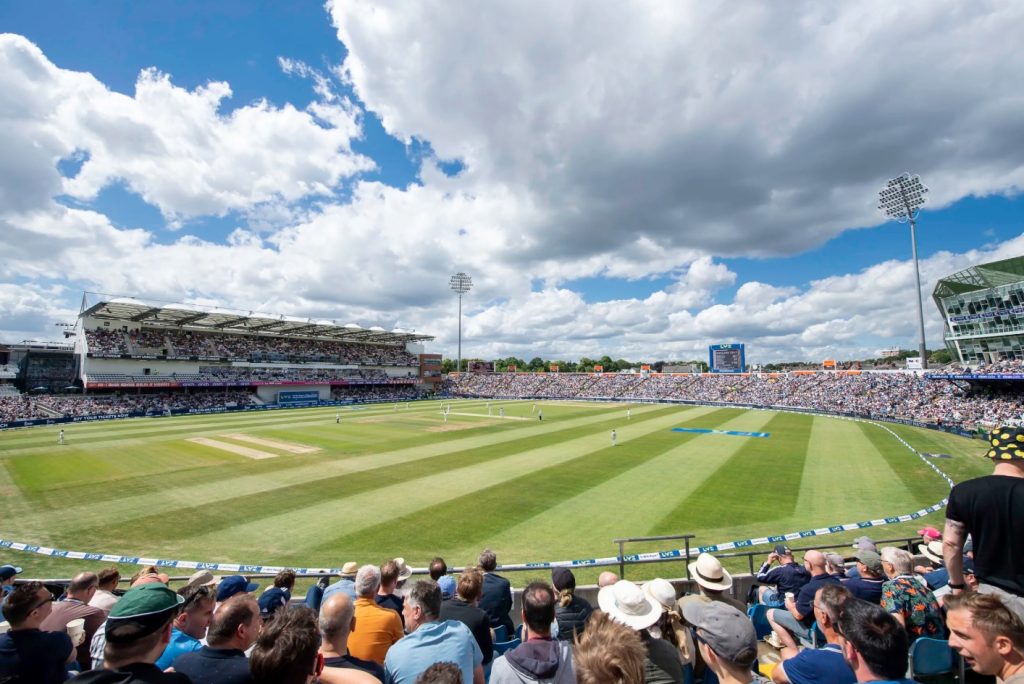England Cricket Ground: Cricket grounds in England are as varied in character as the sport’s rich heritage across the country. From the historic Lord’s Cricket Ground in London to the modern-day marvel of Emirates Old Trafford in Manchester, each ground presents a unique challenge. One key element that influences match outcomes but is often overlooked by casual fans is boundary length.
Table of Contents
England Cricket Ground: In this article, we’ll explore the boundary dimensions of major cricket venues in England, how these affect match strategy, and the role such dimensions play in the evolution of the modern game.
Why Boundary Lengths Matter
England Cricket Ground: Unlike football or rugby, cricket grounds do not follow uniform field sizes. The International Cricket Council (ICC) allows variability within a defined range:
- Minimum boundary length: 59.43 meters (65 yards)
- Maximum boundary length: 82.29 meters (90 yards)
England Cricket Ground: Within these bounds, each stadium’s design, history, and even geographic constraints (like buildings or rivers nearby) dictate the shape and size of the playing area. This affects batting, bowling, and fielding tactics — sometimes profoundly.
Boundary Dimensions at Key English Grounds
| Ground | Straight Boundary | Square Boundary | Notable Feature |
|---|---|---|---|
| Lord’s (London) | 75–80 m | 65–70 m | Famous slope; asymmetrical |
| The Oval (London) | 76–80 m | 68–72 m | Rounder shape; batting-friendly |
| Old Trafford (Manchester) | 80–85 m | 70–75 m | Deep boundaries; windy |
| Headingley (Leeds) | 77–81 m | 68–70 m | Sloping surface; historic ground |
| Edgbaston (Birmingham) | 75–80 m | 65–70 m | Loud atmosphere; shorter leg side |
| Trent Bridge (Nottingham) | 75–78 m | 63–68 m | Shorter square boundary |
| Riverside Ground (Durham) | 77–82 m | 66–70 m | Largest outfield in the north |
| Rose Bowl (Southampton) | 78–83 m | 67–72 m | Scenic but wind-exposed |
Ground-by-Ground Analysis
1. Lord’s Cricket Ground
Often called the “Home of Cricket,” Lord’s is famous not only for its history but also for its sloped and asymmetric outfield. One side of the square boundary is considerably shorter, often enticing batsmen to target that region.
- Unique Features: 2.5-meter slope across the field
- Impact: Bowlers must adjust their lengths, especially seamers
2. The Oval
Another London venue, the Oval offers a more symmetric layout and a batsman-friendly pitch. Boundary dimensions here are balanced, though the fast outfield can make even mis-hits race away.
- Advantage: Great for stroke-makers in ODIs and T20s
- Challenging For: Spinners, especially on flat pitches
3. Old Trafford
With some of the longest straight boundaries in the country, Old Trafford presents a true test for power hitters. The ground is also known for swirling winds and a pitch that can assist both seam and spin.
- Strategic Note: Teams often post larger totals here due to pitch but need smart placement due to deep boundaries.
Impact on Match Types
| Match Type | Short Boundaries Benefit | Long Boundaries Benefit |
|---|---|---|
| Test Cricket | Higher scoring rates | Bowlers gain advantage |
| One-Day Internationals (ODIs) | More boundaries; aggressive play | Demands calculated hitting |
| T20 Internationals | Promotes six-hitting | Increases risk/reward |
In limited-overs cricket, short boundaries are often favored to make the game more entertaining, but they can distort the balance between bat and ball. In contrast, longer boundaries test a batter’s strength and force better shot selection.
How Boundary Length Influences Strategy
A. Batting Approaches
- Short Square Boundaries: Encourage sweeps, cuts, and pulls.
- Long Straight Boundaries: Discourage lofted straight drives unless timing is impeccable.
- Right-Left Combos: Can rotate the strike to exploit the shorter side.
B. Bowling Tactics
- Seamers bowl cross-seam or back-of-a-length deliveries toward the long boundary.
- Spinners loop the ball more on longer sides to tempt poor decision-making.
Historical Matches Where Boundary Length Played a Role
Matches Influenced by Ground Size
| Match | Venue | Outcome Impacted By |
|---|---|---|
| England vs Australia (2015 Ashes) | Edgbaston | Short leg side exploited for quick runs |
| World Cup Final 2019 | Lord’s | Short boundary to leg aided Stokes’ chase |
| England vs Pakistan (2020) | Old Trafford | Pakistan struggled with long straight boundaries |
The 2019 World Cup Final is a striking example of how fine margins and boundary lengths can shift the momentum in close games. England’s boundary count equaling rule controversially decided the outcome.
Boundary Regulations and ICC Guidelines
The ICC recommends specific minimum and maximum boundary lengths, but home boards are allowed to make adjustments within reason. Typically, boundary ropes are brought in by 2–5 meters from the actual perimeter to improve player safety and avoid fielding on uneven ground.
- Regulated Playing Area Diameter: 137.16 to 150 meters
- Modern Stadium Trends: Prioritize fan entertainment — hence, sometimes reduce effective boundary size for more sixes
Comparisons with International Grounds
Let’s see how English venues compare with iconic stadiums worldwide.
Boundary Sizes – Global Perspective
| Ground | Country | Average Boundary (m) | Comparison with England |
|---|---|---|---|
| MCG (Melbourne) | Australia | 85–90 | Larger than any UK venue |
| Eden Gardens | India | 66–70 | Comparable to The Oval |
| Wankhede Stadium | India | 60–65 | Much shorter; batting-friendly |
| Newlands (Cape Town) | South Africa | 65–70 | Similar to Headingley |
As shown, English grounds generally sit in the mid-range of boundary sizes, offering a balanced contest, especially in Test cricket.
Future of Ground Design and Boundary Trends
With T20 cricket reshaping the sport, newer grounds are sometimes constructed with shorter boundaries and flatter pitches to encourage high scores and crowd entertainment. However, in England, traditional grounds are often protected by historical architecture or residential surroundings, limiting significant modifications.
There’s also a growing call for standardizing boundary sizes to ensure fairness in international tournaments. Still, many cricketing purists argue that each ground’s character — including its boundary length — is part of what makes cricket unique.
Boundary length is more than just a number — it’s a crucial strategic factor that influences every aspect of cricket. In England, where grounds vary widely in shape, slope, and size, adapting to boundary dimensions is a skill both batsmen and bowlers must master.
From Lord’s eccentric layout to Old Trafford’s vast outfield, these dimensions bring color and complexity to the game, ensuring no two matches feel the same. As the sport evolves, England’s iconic venues will continue to challenge players and thrill fans, with boundary lengths playing a silent but significant role.


